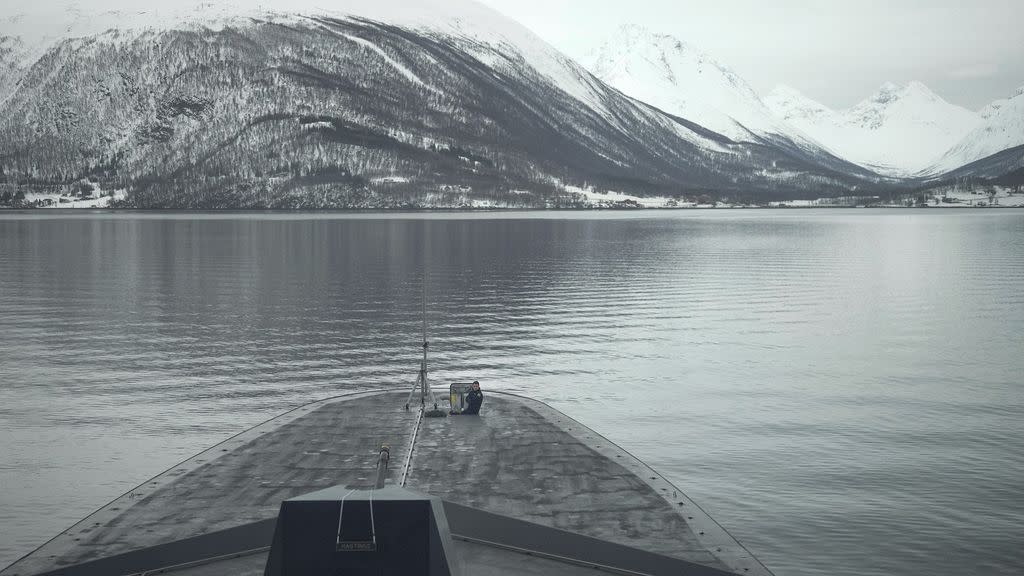What does Finland and Sweden’s membership to NATO mean for race to arm the Arctic?

Russia has had the military advantage in the Arctic for decades but NATO hopes that Sweden and Finland’s recent accession could help the military alliance catch up quickly.
According to the International Institute for Strategic Studies, Moscow has “significant” long-range defence capabilities that “certainly challenge” NATO in the Arctic. Eight of the 11 submarines Russia has that are capable of launching long-range nuclear weapons are based in the Arctic Kola Peninsula, according to a report from Reuters and the International Institute for Strategic Studies (IISS).
Russia is ahead of the rest of the Arctic countries in terms of the militarisation of the region, a research associate at the Arctic Institute, Nima Khorrami, told Euronews. Yet, NATO is closing this gap, he added.
As key players in the Arctic Circle, Sweden and Finland have been developing their military and defence capabilities against the threats presented by neighbouring Russia there. Their accession into NATO — in March 2024 for Stockholm and April 2023 for Helsinki — means seven of the eight members of the Arctic Council, the leading intergovernmental forum promoting cooperation in the Arctic, are in the military alliance. These include Canada, Denmark, Finland, the United Kingdom, Iceland, Norway, Russia, Sweden and the United States.

NATO has yet to draft a plan to include its two newest members in its Arctic strategy but “Russia finds itself at a disadvantage as a result of the seven Arctic states’ NATO membership,” Khorrami said.
“This membership enables them to develop shared threat perceptions in the Arctic, which, in turn, facilitates better and quicker coordination,” he added. “NATO can enhance its stance and deploy its resources more swiftly, thereby becoming a significant security presence in the Arctic.”
Sweden, Finland: two assets for NATO in the Arctic
Sweden and Finland have developed “important Arctic capabilities,” Sophie Arts, the programme officer for the German Marshall Fund for the United States, told Euronews. Stockholm has been increasing its defence budget and thinking about how to escalate its personnel numbers due to Russia’s threat in the region, Arts said. Before they had even joined NATO, the two countries had been working with allies such as Norway for their development in the Arctic, she added.
In 2022, Sweden, Finland, and Norway signed a defence cooperation agreement with a special focus on the Arctic. Under the deal, the countries agreed to strengthen joint operational processes in the Far North and further allow their Armed Forces to cooperate.
The Arctic region of Sweden has been key for Europe’s development. The state-owned mining company LKAB is responsible for about 80 per cent of the iron ore in Europe. Sweden also has the EU’s only orbital satellite launch complex, Esrange, which brings the European bloc closer to competing in the space race between the United States, China, and Russia. Sweden is creating a major data centre hub in the northern part of the country. Facebook has had a data centre in Lulea since 2017.
Yet, one of NATO’s main challenges moving forward is the lack of situational awareness in the Arctic that leaves the alliance exposed to potential threats, Arts said. One of the big questions is “how NATO can integrate its forces and defence plans across different theatres and domains to make sure it creates a 360 security approach,” she said.
NATO ‘vigilant’ against Russian and Chinese threats in Arctic
In October 2023, the Chair of the NATO Military Committee, Admiral Rob Bauer, warned against the imminent threat posed by Russia and China in the Arctic region and urged the alliance to remain “vigilant” for unexpected rival moves.
“The increased competition and militarisation in the Arctic region, especially by Russia and China, is concerning. The melting ice in the Arctic is creating new sea routes that would facilitate the movement of large vessels and shorten navigation times. We cannot be naive and ignore the potentially nefarious intentions of some actors in the region,” Admiral Bauer said during the Arctic Circle Assembly.
In addition to Russia’s threats, China has been seeking influence in the Far North. Beijing has called itself a near-Arctic state and has been cozying up to Moscow to expand its access. The allies announced last year a partnership to promote development in the Northern Sea Route, which is one of the primary shipping lanes in the Arctic.
China and Russia have also launched joint natural gas production projects in the Arctic, giving Beijing’s liquefied natural gas (LNG) giant market a new gas source. In 2022, warships from the two countries conducted a joint exercise in the Bering Sea, which separates Alaska and Russia.
In October of that year, Norway raised its military alert level.
For Liselotte Odgaard, a senior fellow at the Hudson Institute, Finland and Sweden’s accession into NATO will benefit the Baltic Sea more than the Arctic. Due to geographical factors, other countries such as Norway and Denmark have “legitimate patrolling responsibilities” in areas where Russians could expand their influence.
“The Russian nuclear missiles that are stationed in the Arctic, will most likely be fired through Greenlandic airspace because there’s such little surveillance of that airspace. Meaning Denmark should have more surveillance capabilities,” Odgaard told Euronews.
According to Odgaard, no NATO country has ice-strengthened ships with anti-aircraft and anti-submarine capabilities. Russia’s nuclear submarines, which are able to launch an attack that reaches North America, can travel from the Barents Sea to Greenland without being detected. “This leaves big gaps in NATO’s defence posture,” Odgaard said.


